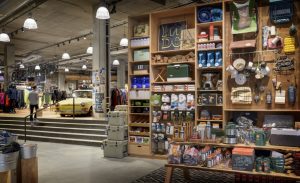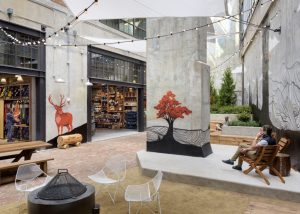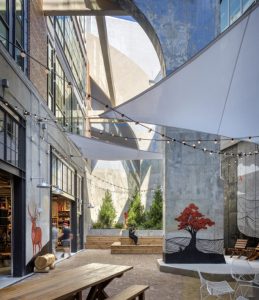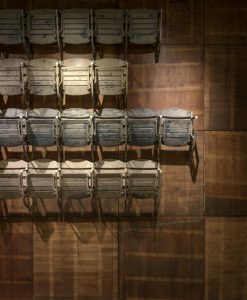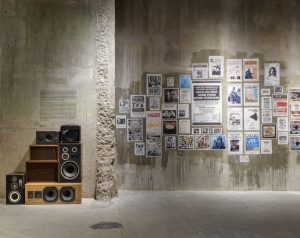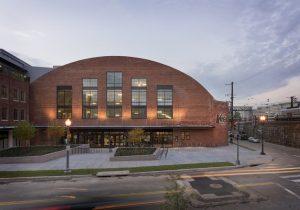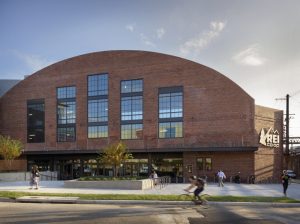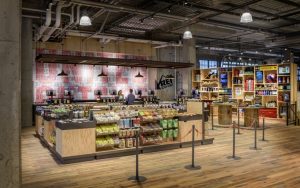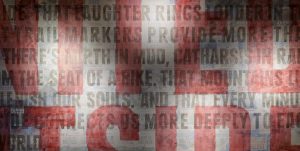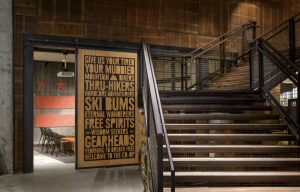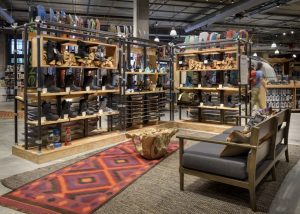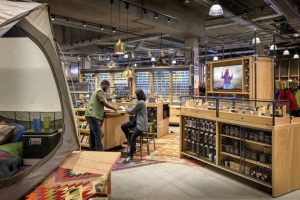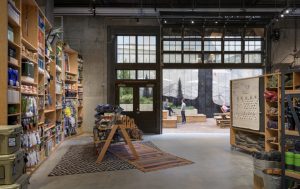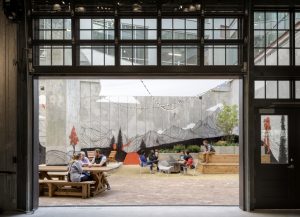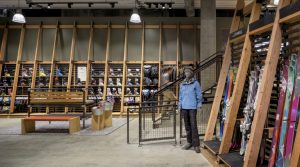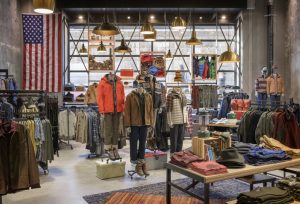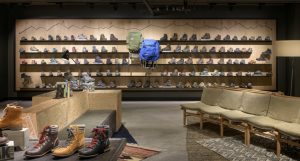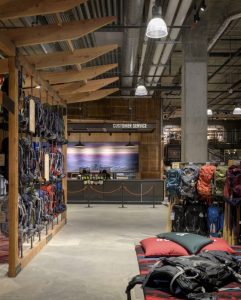Ice manufacturing plant, professional hockey rink, basketball arena, the site of The Beatles’ first U.S. concert, waste transfer facility, correctional institution, parking garage: You could say Washington, D.C.’s historic Washington Coliseum has lived quite a storied past over the last three-quarter century.
With a long, vibrant history of its own, Kent, Wash.-based outdoor retailer REI – founded in 1938 by climbing enthusiast couple Lloyd and Mary Anderson, who sought to improve the variety and quality of products available to other nature-lovers – knew it was right at home in the NoMa neighborhood’s bygone Uline Arena (the building’s other former name). To breathe new life into the once-celebrated structure, REI partnered with Seattle-based CallisonRTKL and Douglas Development (Washington, D.C.) – which purchased the site in 2004 – to collaborate in the imagining and execution of its fifth flagship venture.
Photography: Aaron Leitz Photography, Seattle
“Some of the biggest physical challenges with the building itself had to do with the fact that this structure hadn’t been occupied in decades, so it was in extensive disrepair,” says Alex Shapleigh, senior vice president, CallisonRTKL.
The 51,000-square-foot REI store encompasses only a portion of the entire site, including the first floor of the former arena and ice house. Offices occupy the floorplates above, so ceiling heights (or lack thereof) were of great concern, says Shapleigh, since many of the retailer’s products require vertical room to be adequately displayed. Excavating five feet below grade proved to be the best solution to address this concern, and worked doubly by opening sightlines and creating a wide-open feel, allowing passersby to view more angles of the store.
In efforts to distinguish the site’s offerings from its other flagships – and differentiate it from the eight already-existing stores in the Capitol city – the retailer went straight to the source, asking its D.C.-based co-op members what they wanted in store. “We pulled in some of our best members in the neighborhood and actually had them tell us what they were looking for in the experience,” says Elizabeth Dowd, divisional vp, retail experience, REI.
Advertisement
Photography: Aaron Leitz Photography, Seattle
REI designers knew from their research that bicycling was one of the most popular activities in the region, but its members helped identify how important it was to include an easy-to-access parts and repair shop at the front of the store, making it effortless for cycling customers to ride in and out.
Getting longtime area residents and NoMa’s up-and-coming young professionals to convene at the store for longer than just an average shopping trip was another goal. To do this, the retailer added experiential elements, including a 1052-square-foot La Colombe café, where shoppers can refuel and plan the next outing; an Adventure Station (in partnership with the National Park Service) to connect members to outdoor experts and advice; a community space with free or low-cost in-store classes for paddling, hiking, climbing and more; and perhaps most surprisingly, a vast outdoor courtyard.
Photography: Aaron Leitz Photography, Seattle
“The courtyard is very reflective of the outdoors … We wanted to give those moments where guests could really talk and learn and connect,” says Dowd.
The 2500-square-foot area, which includes fire pits and ample hangout space, was a big undertaking considering its focus wasn’t directly on selling, but as Shapleigh describes, “It was worth the investment [to REI] to dedicate that much energy and dollars to create that community give-back space … where REI could host educational talks, community events or demo gear.”
Advertisement
Photography: Aaron Leitz Photography, Seattle
To solidify its status to its co-op members as the premier expert in camping and nature sports, the store incorporates dedicated equipment and repair shop-in-shops for biking, skiing and snowboarding, as well as a collection of “gear shops.” At each turn, knowledgeable associates are available to listen to inquiries, identify a bevy of products that might be most helpful to them, then assist in narrowing down to an item that best suits their needs – more akin to a friend helping a friend.
Retaining parts of the edifice’s architectural charm, as well as incorporating found objects, including vintage posters from the coliseum’s concerts, a ’60s-era Volkswagen 1500, and worn arena seating repurposed as decorative wall art, were all part of “keeping the building’s soul alive,” says Dowd. “This co-op has a long history, and that building really reflects that history.”
PROJECT SUPPLIERS
Retailer
REI, Kent, Wash.
Design
REI, Kent, Wash.
CallisonRTKL, Seattle
Advertisement
Developer
Douglas Development,
Washington, D.C.
Construction
James G. Davis Construction Corp., Rockville, Md.
Courtyard Mural
Jeremy Collins,
Kansas City, Mo.
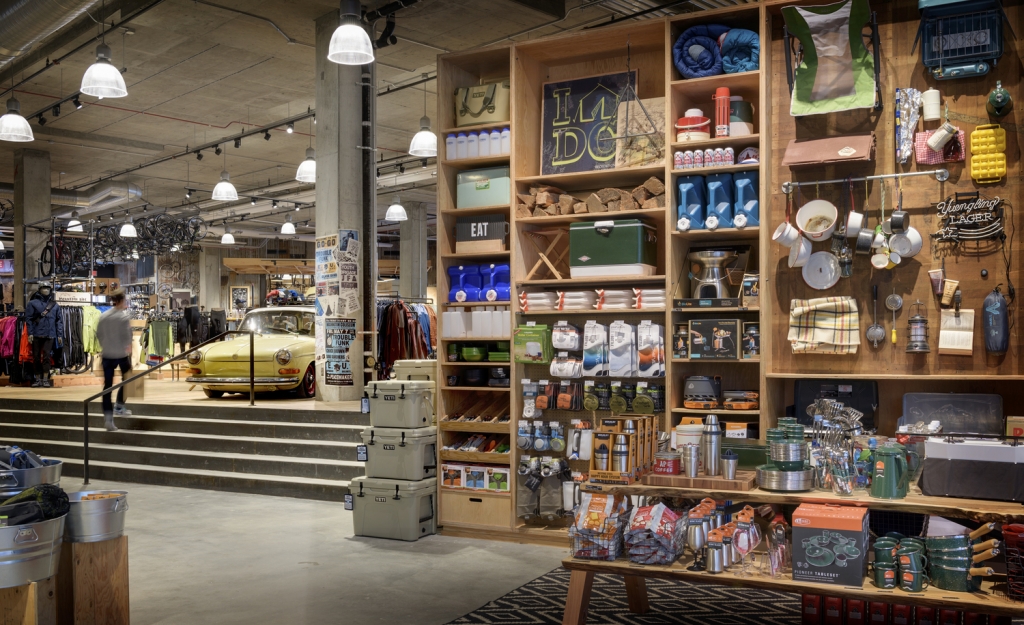

 Photo Gallery3 days ago
Photo Gallery3 days ago
 Headlines1 week ago
Headlines1 week ago
 Sector Spotlight2 weeks ago
Sector Spotlight2 weeks ago
 Headlines1 week ago
Headlines1 week ago
 Headlines4 days ago
Headlines4 days ago
 Headlines2 weeks ago
Headlines2 weeks ago
 Designer Dozen1 week ago
Designer Dozen1 week ago
 Headlines2 days ago
Headlines2 days ago
